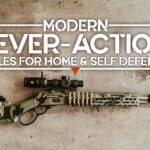

The .38 Special is a classic revolver caliber, perhaps the classic revolver caliber of modern times. It’s impossible to go into any gun store and not find a selection of revolvers chambered in this classic round. It has a history as a workhorse. Though it may not be considered as powerful, or ballistically potent as the almost equal-diameter 9x19mm Parabellum. It’s popularity remains more than 100 years after its creation. Which begs the question, what is the best 38 special ammo?
Historically, its claim to fame was police work, being the caliber of choice for standard duty revolvers and snub-nosed “snubby” and “Chief’s Special” revolvers for decades. But does this classic round still serve a viable purpose today? If you understand its limitations and work to its strengths, you bet it does.
Best 38 Special Ammo
When compiling our list of the best .38 Special ammo, we considered availability, performance, and reliability. With that in mind, our list of the best .38 Special ammo includes:
Federal American Eagle 38 Special 130 Grain FMJ
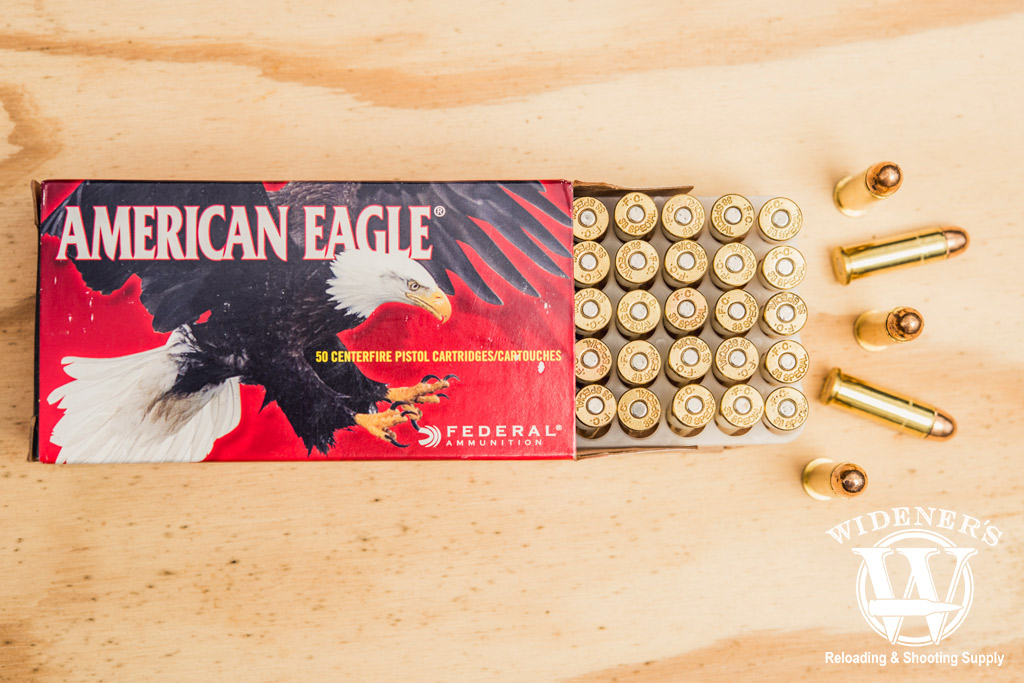
Federal American Eagle .38 Special 130gr FMJ ammo is a great choice for training at the range.
The American Eagle line of ammunition has been a reliable and affordable option for quite a few years. While it will never be accused of match grade, it serves the purpose well of weapons familiarity and basic range use. You can expect to see 890 fps and 229 ft/lbs of energy. The velocity is consistent with other brands of the same type and weight.
| Caliber | Bullet Type | Bullet Weight | Velocity (Muzzle) | Energy (Muzzle) | 25 Yards (Velocity/Energy) | 50 Yards (Velocity/Energy) | 100 Yards (Velocity/Energy) |
|---|---|---|---|---|---|---|---|
| .38 Special | FMJ | 130gr | 890 FPS | 229 FT LBS | 870 FPS/219 FT LBS | 852 FPS/209 FT LBS | 817 FPS/193 FT LBS |
Fiocchi Pistol Shooting Dynamics 38 Special 130 Grain FMJ

Fiocchi has been manufacturing quality ammunition under their brand name since 1877.
Coming in a little hotter than the standard .38 Special FMJ bullet, Fiocchi records their FMJ round at 950 fps and 260 ft/lbs of energy. This is of little consequence outside of the range. Considering the purpose of the FMJ, it’s a nice option to have for those who want something with a “kick” to take to the range.
| Caliber | Bullet Type | Bullet Weight | Velocity (Muzzle) | Energy (Muzzle) | 25 Yards (Velocity/Energy) | 50 Yards (Velocity/Energy) | 100 Yards (Velocity/Energy) |
|---|---|---|---|---|---|---|---|
| .38 Special | FMJ | 130gr | 950 FPS | 260 FT LBS | 930 FPS/250 FT LBS | 905 FPS/236 FT LBS | 865 FPS/216 FT LBS |
Best 38 Special Ammo For Home Defense
Federal Law Enforcement 38 Special +P 158gr. LSWCHP

The .38 Special +P 158gr LSWCHP was created by Federal with concealed-carry self-defense users in mind.
These take the classic lead semi-wadcutter and add a cavity to the flat nose, with no copper jacketing at all on the bullet. These show solid numbers (for the caliber) at 900 fps and 284 ft/lbs of energy, although still far below the average 9mm JHP. This load is a good option for use in snub-nosed revolvers. The heavy slug reduces felt recoil and the soft cast lead bullet is a good option for a caliber that traditionally struggles with expansion due to low energy and velocity.
| Caliber | Bullet Type | Bullet Weight | Velocity (Muzzle) | Energy (Muzzle) | 25 Yards (Velocity/Energy) | 50 Yards (Velocity/Energy) | 100 Yards (Velocity/Energy) |
|---|---|---|---|---|---|---|---|
| .38 Special | LSWCHP | 158gr | 900 FPS | 284 FT LBS | 878 FPS/270 FT LBS | 830 FPS/242 FT LBS | 770 FPS/208 FT LBS |
Hornady 38 Special 158 Grain XTP JHP
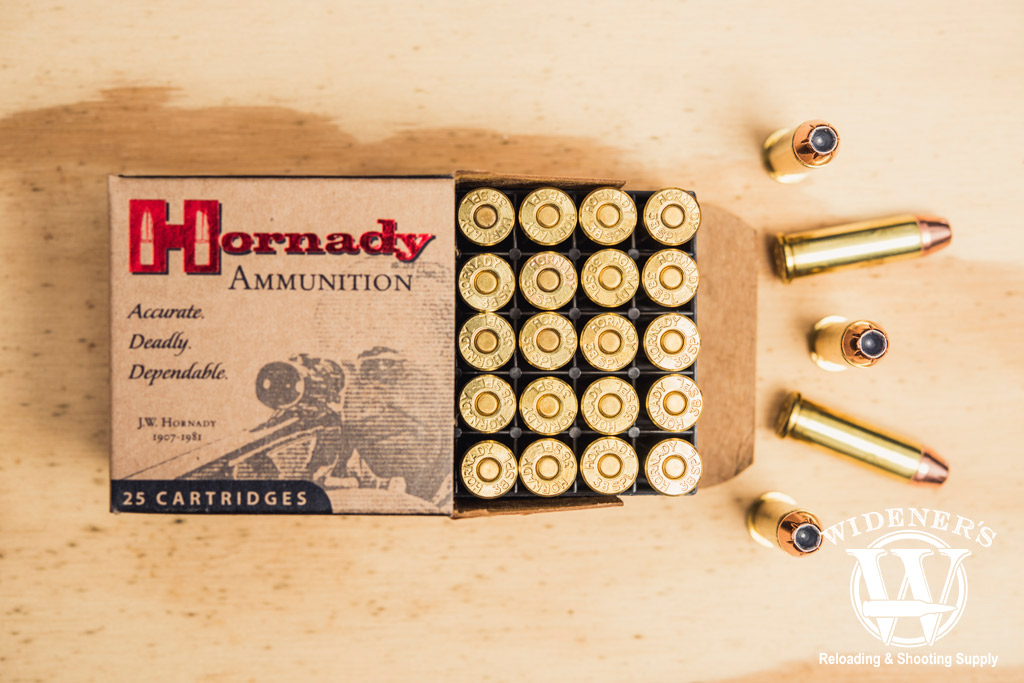
If you’ve been looking for a self-defense JHP round for your .38 Special, Hornady 158gr XTP is it.
One of the heaviest offerings in a JHP for the .38 Special, Hornady uses their excellent XTP ® bullet. It’s designed to produce optimum expansion through the use of precision serrations and a gilded jacket. It is not especially fast at 800 fps so it is imperative that it use a quality projectile to optimize stopping power.
| Caliber | Bullet Type | Bullet Weight | Velocity (Muzzle) | Energy (Muzzle) | 25 Yards (Velocity/Energy) | 50 Yards (Velocity/Energy) | 100 Yards (Velocity/Energy) |
|---|---|---|---|---|---|---|---|
| .38 Special | XTP | 158gr | 800 FPS | 225 FT LBS | 785 FPS/216 FT LBS | 775 FPS/210 FT LBS | 751 FPS/198 FT LBS |
Cartridge Specs
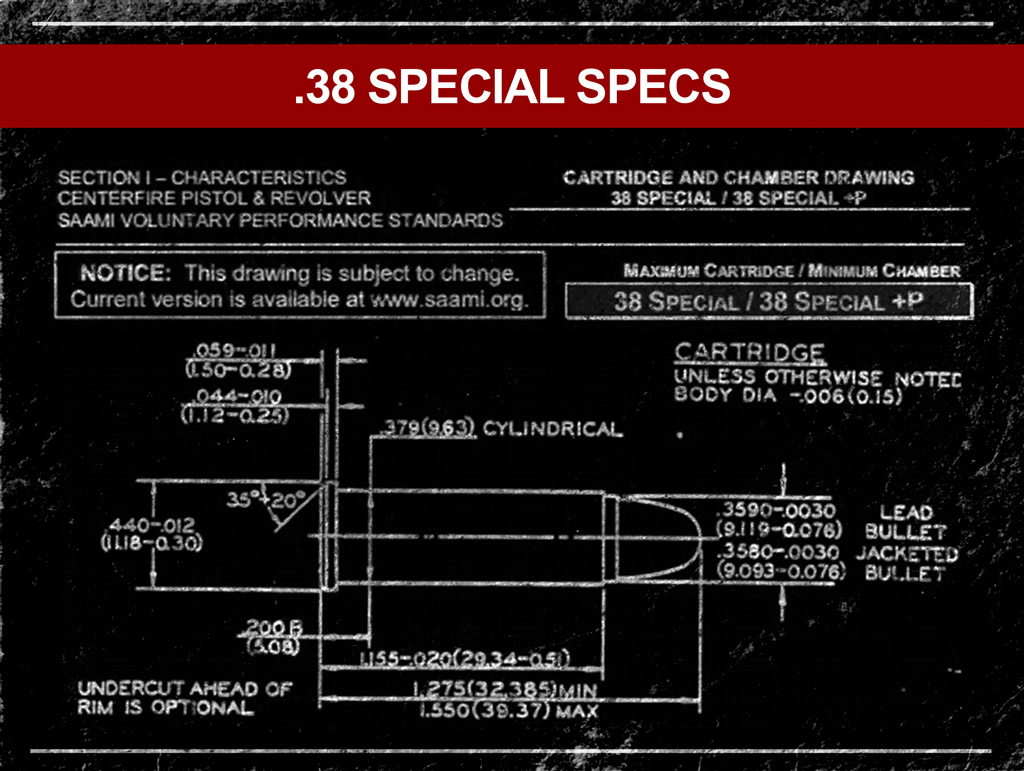
The .38 Special cartridge has less power than the .357 Magnum round, despite having almost identical case dimensions.
.38 Special offers close-range performance with standard recoil. It typically comes in bullet weights ranging from 90 to 158 grains, offering a good balance of velocity and energy. It’s designed to be used in revolvers, however, it’s often found in lever action rifles as well. In terms of size, it’s slightly larger than a 9mm bullet and identical in size to the similar .357 Magnum round.
| Cartridge Specs | .38 Special |
|---|---|
| Parent Casing | .38 Long Colt |
| Bullet Diameter | .357″ |
| Neck Diameter | .379″ |
| Base Diameter | .379″ |
| Case Length | 1.155″ |
| Overall Length | 1.550″ |
| Grain Weight | 90-158gr |
| Max Pressure (SAMMI) | 17,500 PSI |
.38 Special Bullet Types & Weights
One reason revolvers are unique is in their ability to process many different bullet types and weights, without any changes to weapon’s basic functions. In fact, a revolver can run a mix of any type of ammunition, with every load variation because the action has no reliance on automatic feeding and cycling. Therefore, revolver calibers, like the .38 Special, are able to utilize many different bullet weights and designs which magazine-fed semi-automatic pistols simply cannot do.
Wadcutter
A crowd pleaser and favorite of revolver shooters, the wadcutter is a slow, blunt bullet that is designed to be seated flush with the top of the bullet case. These are designed for short-distance target shooting where bullet drop and trajectory are not likely to be a factor. The flat nose of the bullet works to cut out nearly perfect circles in paper targets, making hits easy to identify visually. Also, the clean holes make scoring more precise during competition and cowboy-action shoots.
Wadcutters have traditionally been popular for use in short-nosed “snubby” revolvers. These popular guns have extremely short barrels and are not capable of effectively utilizing higher-velocity ammunition.
Semi-Wadcutter (SWC)
These weigh in at the heaviest end of modern production .38 Special bullets, typically at 158gr. They are soft lead with no out jacket, and unlike wadcutters, they do protrude from the case as any ball or JHP bullet tends to do.
The characteristics of a SWC bullet are a flat point, a conical nose, and the base of the cone is less than that of the cylinder diameter and is accentuated by a sharp shoulder. The SWC is a general-purpose bullet, used commonly in plinking, target shooting, hunting small game, and self-defense on occasion.
Lead Round Nose (LRN)
The original shape of the bullet for the line of .38 calibers, the lead round nose is just that; it is an unjacketed projectile of soft lead which is shaped in the traditional ball shape. These remain very common and popular. They are cheap and very fast to manufacture, and they work very well out of those vintage designs. This is not a highly viable defensive round, although it is certainly better than nothing.
Full Metal Jacket & Metal Case
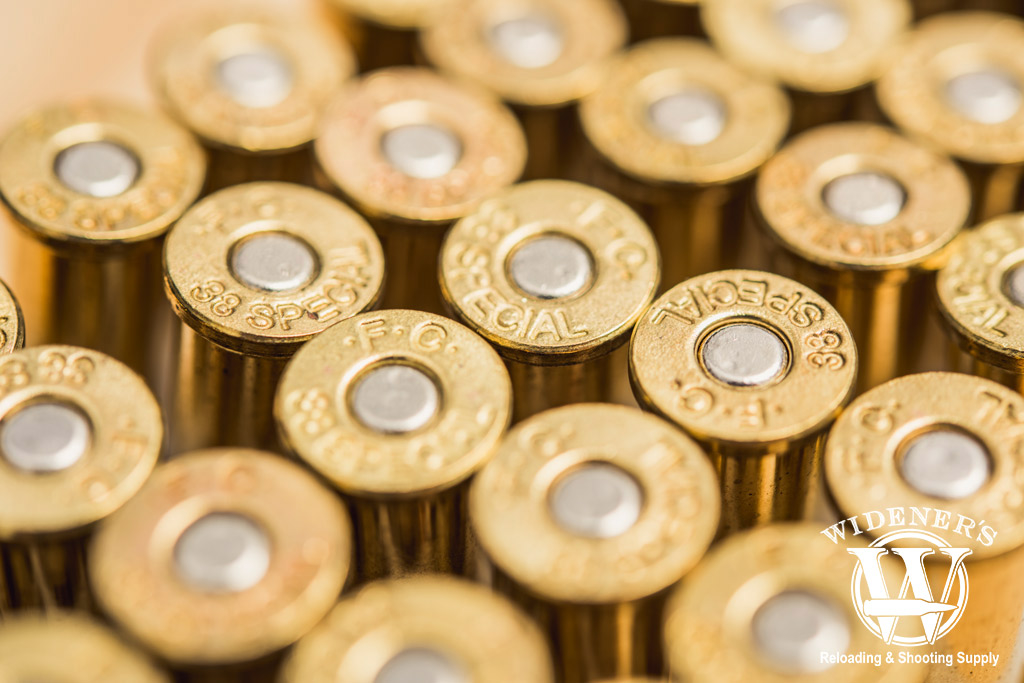
The .38 Special comes in a wide variety of bullet types from (FMJ) full metal jacket to (SWC) semi-wadcutter.
As with most other common calibers, the FMJ and MC bullets are used for range training and qualifications. In other words, not strong on stopping prowess. So what is the benefit of the FMJ and the MC bullet over the LRN? Lead bullets deform when not encapsulated in copper or brass jacketing. If you are shooting indoors you will want to opt for the jacketed slug to keep lead particles from becoming airborne contaminants.
These generally come in either 130gr or 158gr with around 800 fps, 185 ft/lbs energy, and 750 fps, 200 ft/lbs, respectively.
Jacketed Hollow Point
JHPs represent the most diverse range of weights and performance in the .38 Special. The most common bullet weights of 110gr, 125gr, 129gr, and 158gr. These are often +P to optimize ballistics for the underpowered .38.
Hornady produces their acclaimed FTX ® Critical Defense ® in a 110gr offering, both standard pressure and +P. The standard pressure version produces 1,010fps and 249 ft/lbs, while the +P is 1,090fps and 290 ft/lbs, making them fairly potent.
125 gr JHPs are usually around 950 fps and 250 ft/lbs, and the heavy 158 gr JHPs produce 800fps and 200 ft/lbs.
38 Special Ammo Quick Answer Box:
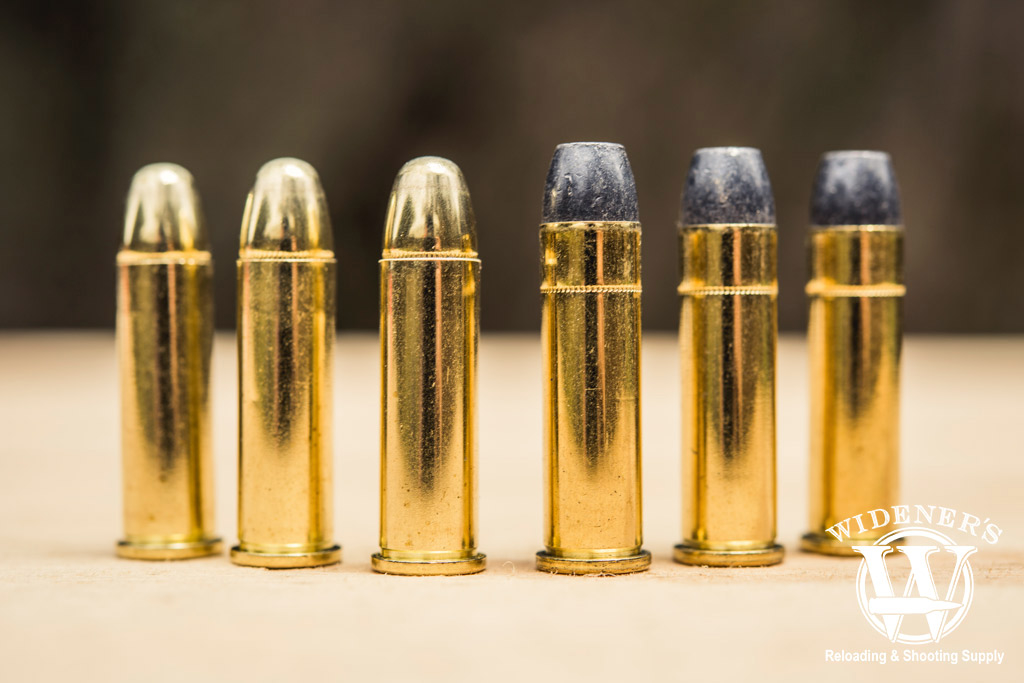
From left to right: Fiocchi .38 Special 130gr FMJ compared to Sellier & Bellot .357 158gr LFN.
What’s the difference between .38 Special and .357 Magnum?
The .38 Special cartridge shares the same .357-inch diameter as the .357 Magnum cartridge. The size difference between the two cartridges is the length of the casing. The .357 Magnum cartridge case is 1.29″ in length, while the .38 Special cartridge case is 1.15″ in length. The .357 Magnum cartridge is designed to fit handguns capable of handling high chamber pressure. The casing size difference is to prevent .357 Magnum ammo from being loaded in a handgun chambered for .38 Special.
Is .38 Special more powerful than 9mm?
.38 Special and 9×19 ammo have a similar diameter, .38 Special measures in at .357 inches and 9mm at .355 inches. A 9mm bullet is quite a bit shorter than a .38 Special, but both have similar bullet weights and bullet types available.
9mm starts to pull away from .38 Special when you look at the ballistics. 9mm ammo has higher muzzle energy and velocity, when compared to .38 Special ammo. .38 Special is a heavier, slower bullet than the 9mm. It can’t outmatch 9mm ballistics, but it does allow for a heavier max bullet weight of 158gr VS 9mm at 147gr.
Can a .357 Magnum gun shoot .38 Special ammo?
Yes, handguns and rifles that are chambered in .357 Magnum can safely fire .38 Special ammo. The lower pressure of the .38 Special cartridge can easily be handled by firearms chambered for the robust .357 Magnum cartridge.
History Of .38 Special Ammo
A contemporary of the iconic 9mm Luger and .45 ACP, the venerable .38 Special traces its roots to the largely defunct .38 Long Colt, which it replaced as the standard issue caliber in 1898. It proved inadequate in terminal performance and penetration when used in the Philippines prior to World War I. Looking at the numbers, the reported low-performance checks out, a 150 gr projectile producing 777 feet per second and 201ft/lbs of energy at the muzzle, isn’t going to have a lot of knock-down power. At the time of its introduction, the .38 Special was considered a modern cartridge. So, other period handgun loads were performing at standards less than that. As a military cartridge, those are hardly the ballistics you’d want to see in a front-line service pistol.
.38 Special ammo was an evolution to produce significantly better ballistics from a comparably sized historical cartridge. The .357-inch caliber cartridge was originally introduced with 21 grains of black powder. It was upgraded to 200 grains of smokeless powder by the 1920’s at the request of police departments.
By 1930, Smith & Wesson had released a 158gr .38 Special high-speed bullet, and the rest, as we know it, is history. The desired increase in ballistics was finally achieved. The .38 Special was able to produce between 100 fps and 150 fps of improved muzzle velocity when using a 158gr slug.
What Makes The .38 Special… Special?
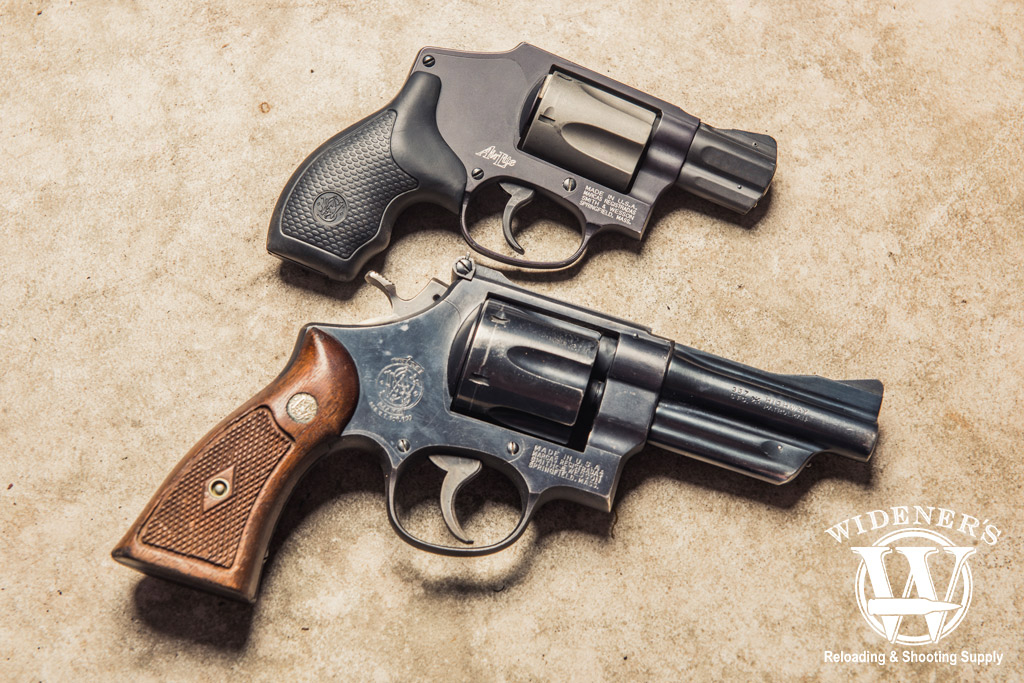
From top to bottom: J-frame .38 Special “snubby” revolver compared to a K-frame .357 Magnum revolver by Smith & Wesson.
Once the marquee police caliber in the United States, the .38 Special fell out of favor in the 1980s. It’s no small coincidence this dressing-down took place in the same era as the war on drugs. Shootouts between peace officers and those in the narcotics trade became more common. This was of course before projectile technology improved dramatically. The simple SWC slugs were found to be not very effective against well-armed bipedal threats. History aside, the .38 Special still has a fairly strong following. Particularly since advances in alloys and polymers have produced “snubby” revolvers weighing in at well under a pound.
Today you’ll find a wide variety of .38 Special “snubbies” at the local gun store. They are normally next to the .357 Magnum revolvers that are about the same size. I still recommend the .38 Special revolvers to new shooters. With proper training, it can be a very effective self-defense round. The ballistics of the .357 Magnum are very tempting. However, it is a full-power load that is too punishing for most inexperienced shooters to effectively handle. If you do it right, the .38 Special can be just as effective for close-quarters self-defense. You’ll need to practice a lot because revolvers do take more work to be proficient at. With practice, you’ll have the confidence in knowing the reliability of your weapon is there when you need it.
Making Your Shots Count
That brings me to my last point. Revolvers do have another intrinsic value, they make it easy to count shots in a high-stress situation. You know you have a guaranteed 5 to 7 (or more) shots available. Assuming your gun is a quality firearm kept in good working order. Try counting your rounds with a full-sized semi-automatic, once you make it past 10, things start getting complicated.
While modern semi-automatics are reliable, they still have to deal with issues. Stovepipes, jams, and failure to feed issues are the most common. Semi-autos are also notoriously prone to the pickiness of ammunition. Revolvers don’t care about that. Even if a cheap steel case splits in your chamber, the gun will still fire the bullet. Modern plastic guns may look good in slick magazine ads, but it’s hard to beat the reliability of a good old-fashioned revolver.


